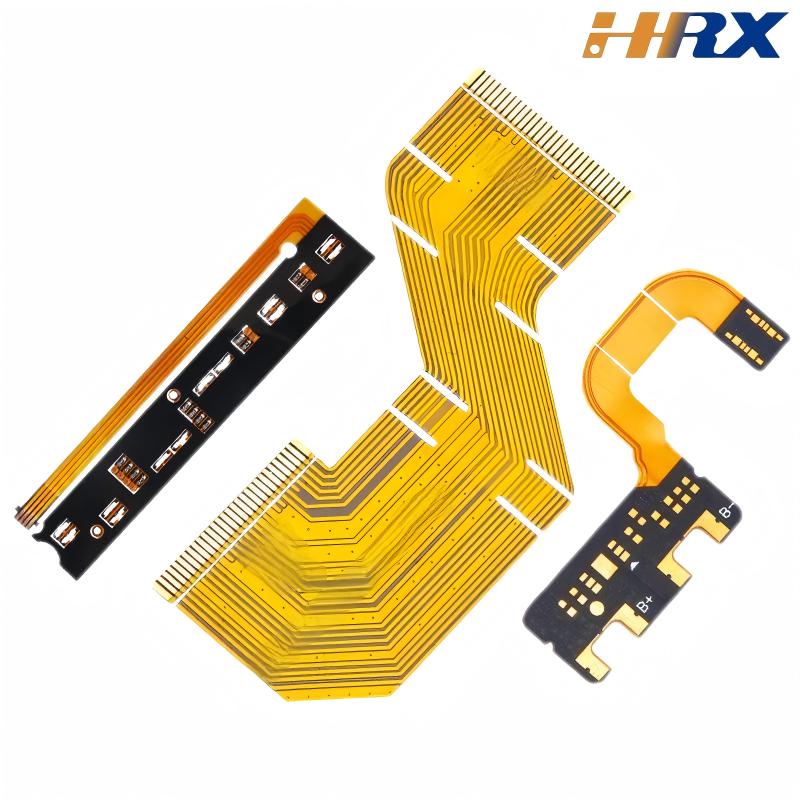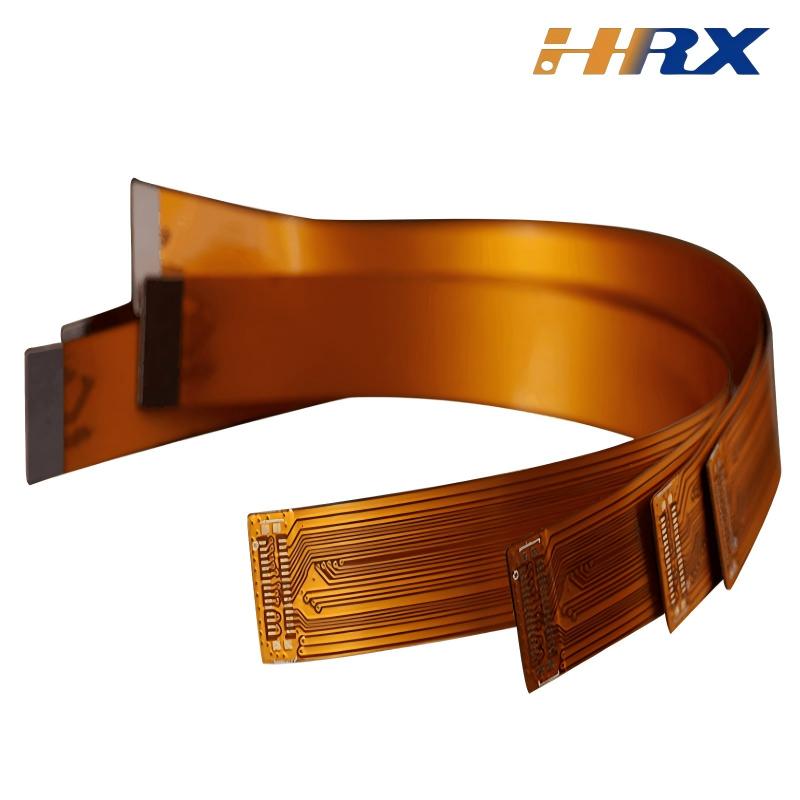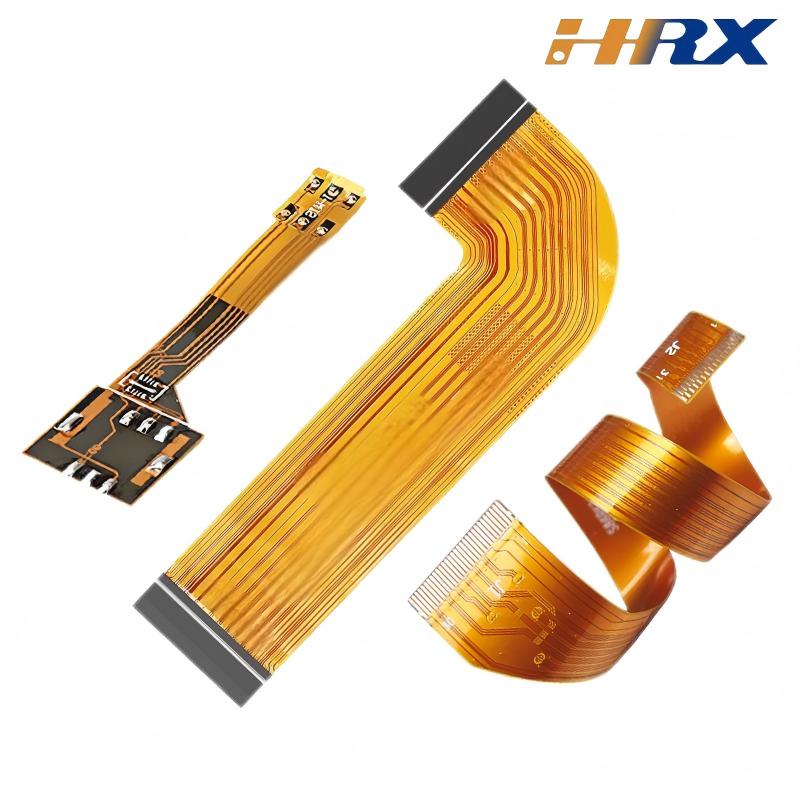Search
FPC Quality Inspection Requirements and Key Factors: A Comprehensive Guide for Electronics Manufacturers
- Jun 07,2025
-
Share
In the dynamic realm of advanced electronics manufacturing, Flexible Printed Circuits (FPCs) have become indispensable components, especially in high - tech applications such as 5G communication devices, autonomous vehicles, and wearable electronics. As a globally recognized ODM/OEM powerhouse specializing in FPCs, PCBs, and Rigid - Flex Printed Boards, Shenzhen Huaruixin Electronics Co., Ltd. has extensive expertise in ensuring that every product adheres to the most stringent quality standards.

FPC Quality Inspection Requirements
1. Physical Characteristics Inspection
Visual and Dimensional Integrity: The physical quality of FPCs is the cornerstone of performance. Surface anomalies such as micro - scratches, kinks, voids, particulate contamination, exposed copper with oxidation, or substrate delamination are strictly prohibited, as they can severely impact both functionality and assembly processes. Dimensional accuracy is meticulously controlled, with overall dimensions (length, width, and thickness) conforming to design tolerances, typically within ±0.1mm. In terms of via characteristics, drill hole diameter errors are maintained ≤±0.05mm, and via location deviations are kept ≤±0.05mm, with even tighter tolerances for high - precision applications. Conductor width and spacing are crucial parameters; the width tolerance is set at ≤±10%, and the minimum spacing must meet or exceed design specifications to prevent electrical shorts or opens.
Material Compatibility and Surface Finishes: Material synergy is essential. Substrate materials like Polyimide (PI), renowned for its excellent thermal stability (withstanding temperatures up to 280°C), and Polyethylene Terephthalate (PET), a cost - effective option for consumer electronics, must have compatible coefficients of thermal expansion (CTE) with coverlays and adhesives to avoid thermal - induced failures. Surface finishes, including Immersion Gold (ENIG) with a minimum thickness of 0.1μm and Organic Solderability Preservative (OSP), are applied uniformly to ensure reliable soldering and long - term corrosion resistance.
2. Electrical Performance Testing
Conductivity and Insulation Testing: Electrical performance is the core of FPC functionality. Thorough conductivity checks are performed using Flying Probe Testers or Automatic Test Equipment (ATE) to ensure continuous circuit paths without open circuits. Insulation resistance between adjacent conductors is rigorously tested at 500V DC, with a minimum requirement of ≥100MΩ to prevent leakage currents. For high - speed signal transmission lines, such as those for USB 4.0 or HDMI 2.1, impedance matching is critical. The characteristic impedance is precisely controlled at 50Ω±10% to maintain signal integrity and minimize signal loss.
Reliability and Environmental Testing: FPCs undergo a battery of reliability tests. Flexure cycling tests subject the circuits to a specified number of bends (e.g., 100,000 cycles), with the requirement that resistance changes remain ≤10% and no fractures occur. Electrical load tests ensure that FPCs can handle rated voltage and current without overheating or breakdown. Environmental stress screening includes High - Temperature Storage (125°C×24 hours), Low - Temperature Storage (- 40°C×24 hours), and Humidity Bias Testing (85°C/85%RH×1000 hours) to assess material stability and electrical performance under extreme conditions.
3. Functionality and Manufacturability
Assembly Compatibility: FPCs must be fully compatible with modern assembly techniques. Pad coplanarity and pitch are optimized for Surface Mount Technology (SMT) processes to prevent common soldering defects like tombstoning and bridging. Precision - engineered alignment holes and gold - finger contacts ensure seamless integration with connectors, providing reliable mechanical and electrical interfaces.
Traceability and Marking: Each FPC is marked with unique identification codes, including LOT numbers, revision levels, and polarity indicators. This traceability system, compliant with Industry 4.0 standards, enables complete process tracking from raw material sourcing to final product delivery.
Key Influencing Factors of FPC Quality
1. Design Phase
Circuit Layout Optimization: The design stage is pivotal. A well - designed circuit layout minimizes signal interference, optimizes power distribution, and ensures mechanical flexibility. Critical design considerations include conductor width - to - current - carrying capacity ratios, appropriate bend radius specifications (at least three times the substrate thickness), and precise blind/buried via alignment (≤±0.03mm) for multi - layer FPCs.
Material Selection: Material choice is application - specific. PI - based FPCs are ideal for automotive and aerospace applications due to their high - temperature resistance and chemical stability, while PET - based FPCs are commonly used in consumer electronics for their cost - effectiveness and lightweight properties. Selecting adhesives with low dielectric constants (Dk < 3.0) is crucial for high - frequency applications to reduce signal attenuation.
2. Production Process
Advanced Manufacturing Techniques: The production process involves several high - precision steps. In the drilling operation, high - speed spindles (≥150,000 RPM) and dust - free environments are used to create clean - walled vias. Electroplating processes ensure a minimum through - hole copper thickness of 25μm with a plating uniformity of ≤5%. Laser Direct Imaging (LDI) technology is employed for pattern transfer, achieving line width accuracies of ±5μm, significantly outperforming traditional photolithography methods.
Etching and Lamination Control: During etching, strict control of the etch factor (≥3:1) minimizes undercutting and maintains conductor integrity. Lamination of coverlays and stiffeners is performed under precisely controlled temperature (180 - 220°C) and pressure (5 - 10MPa) conditions to ensure void - free bonds and optimal adhesion.
3. Equipment and Process Control
Cutting - Edge Inspection Equipment: State - of - the - art inspection tools are essential. Automatic Optical Inspection (AOI) systems with sub - 10μm resolution can detect the most minute defects, while high - precision impedance analyzers, such as the Keysight 81040A, ensure accurate impedance measurements for high - frequency circuits.
Environmental Monitoring: Manufacturing facilities are maintained as Class 1000 cleanrooms to prevent particulate - induced electrical failures. Stringent temperature (23±2°C) and humidity (45 - 65%RH) controls are in place to safeguard material properties and manufacturing precision.
4. Personnel and Management
Skilled Workforce and Quality Management Systems: Our team of highly trained engineers and operators strictly adheres to ISO 9001:2015 and IPC - 6013 quality standards. Rigorous First Article Inspection (FAI) procedures and Statistical Process Control (SPC) techniques are implemented to ensure consistent product quality. A robust supply chain management system, with certified ISO 9001/14001 suppliers, guarantees the traceability and quality of raw materials.
Shenzhen Huaruixin Electronics Co., Ltd.: Your Premier FPC Manufacturing Partner
With our large - scale manufacturing base, advanced production lines, and experienced R&D team, Shenzhen Huaruixin Electronics Co., Ltd. is well - positioned to meet your most demanding FPC, PCB, and Rigid - Flex Printed Board requirements. Whether you are developing next - generation smartphones, electric vehicle control systems, or medical diagnostic devices, our customized solutions are designed to deliver exceptional performance, reliability, and cost - effectiveness.
If you have any project requirements or need professional consultation on FPC technology, please feel free to contact us. Visit our website www.hrxfpc.com to explore our comprehensive product portfolio, or send an email to sales@hrxfpc.com for detailed discussions. We are committed to collaborating with you to drive innovation and success in your electronic projects.

Let’s talk! We’ll provide the perfect solution for you!
-
 Huaruixin Electronics mainly produces printed circuit boards as the core business, to provide customers with one-stop solutions for FPC/PCB production, components sourcing and Assembly.
Huaruixin Electronics mainly produces printed circuit boards as the core business, to provide customers with one-stop solutions for FPC/PCB production, components sourcing and Assembly. - WHAT WE DO — PCB Design Solutions — Flex PCB Production — Components Sourcing — FPC&PCB Assembly
- PRODUCTS — Single Sided Flexible Circuits — Double Sided Flexible Circuits — Multilayer Flexible Cirucits — Rigid-Flex Circuits — FPC Assembly — PCB Assembly
- CAPABILITY — FPC Capability — Rigid-Flex Capability — PCB Capability — Assembly Capability
- Copyright © 2024 Shenzhen Huaruixin Electronics Co., Ltd. All Rights Reserved.
- Design By BONTOP


